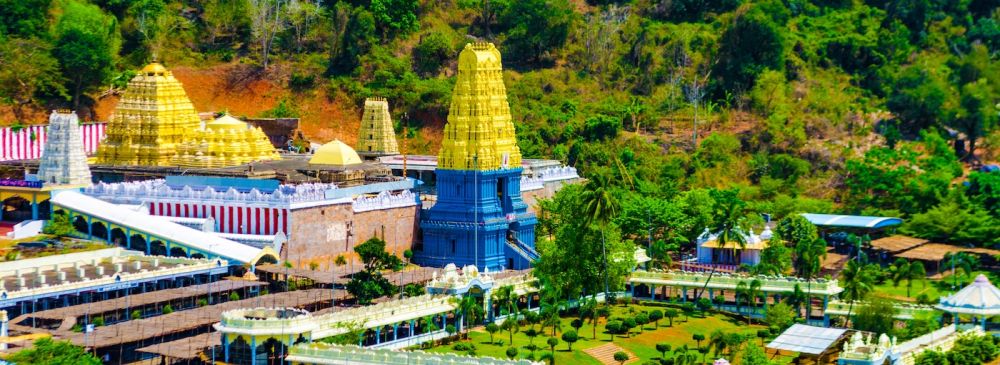

Simhachalam Temple, located in the charming coastal city of Visakhapatnam (Vizag) in Andhra Pradesh, India, is a remarkable testament to Indian culture and spirituality. Known for its stunning architecture and religious significance, the temple has been a beacon of Hindu pilgrimage for centuries.
The history of Simhachalam Temple dates back to the 11th century, as attested by the inscriptions found in the temple dating to 1098 AD. It is dedicated to Lord Narasimha, an avatar of Lord Vishnu, and is one of the eighteen "Narasimha Kshetras" in India. The temple boasts of a unique blend of Orissan, Chalukya, and Chola architectural styles, a confluence that has attracted historians and art enthusiasts alike.
The prominence of Simhachalam Temple as a sacred site has always drawn pilgrims, but modern tourism has seen a significant rise in the latter half of the 20th century. As travel became more accessible, the temple's majestic presence and its annual festivities, particularly the Chandanotsavam Festival, have lured both devotees and tourists from around the globe. The temple's history and the panoramic views of the surrounding landscape including the Eastern Ghats and the Bay of Bengal, make it a unique cultural and natural attraction.
In recent years, the development of eco-tourism and adventure tourism in and around Visakhapatnam has created additional interest in Simhachalam. The emergence of boutique hotels, local craft markets, and improved accessibility through better roads and facilities have further boosted tourism. Also, Online Darshan booking and virtual tour initiatives have catered to the convenience of visitors from afar, making the divine experience accessible during the unprecedented times of the pandemic.
Today, Simhachalam Temple is not just a destination for spiritual seekers. It has become a testament to the synergy between spirituality, history, and nature. As a focal point in the rich tapestry of Andhra Pradesh's tourism portfolio, the temple continues to astound visitors with its festivals, rituals, and architectural grandeur while contributing significantly to the area's socio-economic development through tourism.
For those planning to visit, the Simhachalam Temple is open throughout the year, with specific timings for Darshan. The Chandanotsavam festival, celebrated annually in the month of Vaishakha (April/May), sees the deity adorned with sandalwood paste, which is a sight not to be missed. Modest attire is recommended for visitors, and there are facilities available for stay and dining in the temple complex and nearby areas. Always check for the latest travel advisories and temple schedules before planning your visit.
The management of Simhachalam Temple, along with the Indian government and various cultural organizations, have been diligently working to preserve this historic landmark. Efforts toward maintenance, restoration, and the promotion of sustainable tourism are in place to ensure that the sacredness and beauty of Simhachalam can be passed on to future generations.
Come, explore the spiritual ambiance, delve into history, and immerse yourself in the serenity of the Simhachalam Temple, a jewel in the crown of Visakhapatnam's rich cultural heritage.